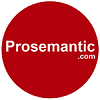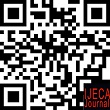The Concept of Facilities and Infrastructure Management in Schools: A Literature Review
Abstract
Education is a long-term investment in human resources and aims to produce quality generations. One way to guarantee the achievement of this goal is to require standards for facilities and infrastructure that schools must have and how to manage this, because there are still many schools that don't know about it, plus there are inadequate facilities, which creates a quality gap between schools themselves. So this research aims to describe the concept of management of facilities and infrastructure in schools. The method used is a literature study with a descriptive qualitative approach, then the relevant content is analyzed and conclusions are drawn. The results of the research show that the concept of infrastructure management in schools includes 3 important things, namely the planning concept, then the procurement concept which consists of purchasing, self-manufacturing, renting, borrowing, receiving grants, exchanging, recycling, and repairing, finally the regulatory concept which consists of inventory, storage, maintenance, and use. The hope is that these concepts can optimize the educational process and make learning in schools more effective and efficient.
Keywords
Full Text:
DOWNLOAD [PDF]References
Ahsan, K., & Rahman, S. (217AD). Green public procurement implementation challenges in Australian public healthcare sector. Journal of, 152. https://doi.org/https://doi.org/10.1016/j.jclepro.2017.03.055
Ainscow, M. (2020). Promoting inclusion and equity in education: lessons from international experiences. Nordic Journal of Studies in Educational Policy, 6(1), 7–16. https://doi.org/https://doi.org/10.1080/20020317.2020.1729587
Bafadal, I. (2003). Manajemen Perlengkapan Sekolah Teori dan Aplikasi. Bumi Aksara.
Cohen, J. (2017). Maker principles and technologies in teacher education: A national survey. Journal of Technology and Teacher Education, 25(1), 5–30. https://www.learntechlib.org/p/172304/
Cosgrove, W. J., & Loucks, D. P. (2015). Water management: Current and future challenges and research directions. Water Resources Research, 51(6), 4823–4839. https://doi.org/https://doi.org/10.1002/2014WR016869
Cruz, N. F. da, & Marques, R. C. (2012). Delivering local infrastructure through PPPs: Evidence from the school sector. Journal of Construction Engineering and Management, 138(12), 1433–1443. https://ascelibrary.org/doi/abs/10.1061/(ASCE)CO.1943-7862.0000558
Damanik, N., & Yahfizham. (2023). Islamic Education Management In Senior High School. International Journal of Educational Review, Law And Social Sciences (IJERLAS), 3(1), 282–292. https://doi.org/https://doi.org/10.54443/ijerlas.v3i1.607
Delsah, R. T. (2019). Relationships Education Facilities and Infrastructure Administration in Improving Teaching and Learning in Early Childhood Education. https://doi.org/10.31227/osf.io/5z3qj
Dumond, E. J., & Johnson, T. W. (2013). Managing university business educational quality: ISO or AACSB? Quality Assurance in Education, 21(2), 127–144. https://doi.org/https://doi.org/10.1108/09684881311310674
Fahmi, I., & Ali, H. (2022). Determination of Career Planning and Decision Making: Analysis of Communication Skills, Motivation and Experience (Literature Review Human Resource Management). Dinasti International Journal of Management Science, 3(5), 823–835. https://doi.org/https://doi.org/10.31933/dijms.v3i5.1222
Fertika, D. Y., Hariri, H., & Sowiyah, S. (2022). Procurement and maintenance of facilities and infrastructure in inclusive schools. International Journal of Educational Studies in Social Sciences, 2(2), 79–87. https://lighthouse-pub.com/ijesss/article/view/165
Fidler, B. (2002). Strategic Management for School Development : Leading Your School’s Improvement Strategy. Strategic Management for School Development, 1–84. https://www.torrossa.com/en/resources/an/4913190
Fisher, K. (2001). Building Better Outcomes: The Impact of School Infrastructure on Student Outcomes and Behaviour. Schooling Issues Digest. http://www.detya.gov.au/schools/publications/2001/index.htm.
Ford, M. E., & C. W. Nichols. (2019). A taxonomy of human goals and some possible applications. constructing living systems. Routledge, 289–312. https://www.taylorfrancis.com/chapters/edit/10.4324/9780429025297-10/taxonomy-human-goals-possible-applications-martin-ford-nichols
Gogan, L. (2014). Human capital: the need to be evaluated. Review of Applied Socio-Economic Research, 7(1), 52–60. http://reaser.eu/RePec/rse/wpaper/R7_6_Gogan_p52-60.pdf
Heilemann, M., Prakash, V. J., Beulting, L., & Emmelmann, C. (2021). Effect of heat accumulation on the single track formation during laser metal deposition and development of a framework for analyzing new process strategies. Journal of Laser Applications, 33(1). https://doi.org/https://doi.org/10.2351/7.0000307
Herath, N., Duffield, C., & Zhang, L. (2023). Public-school infrastructure ageing and current challenges in maintenance. Journal of Quality in Maintenance Engineering, 29(2), 401–419. https://www.emerald.com/insight/content/doi/10.1108/JQME-06-2021-0043/full/html
Kaplan, A. M., & Haenlein, M. (2016). Higher education and the digital revolution: About MOOCs, SPOCs, social media, and the Cookie Monster. Business horizons, 59(4), 441–450. https://doi.org/https://doi.org/10.1016/j.bushor.2016.03.008
Mahlangu, M. N. (2020). The effects of infrastructure, teaching & learning materials in geography classrooms: investigating the experiences of teachers & learners in two public schools, Gauteng province. https://hdl.handle.net/10539/30026
Marishane, R. N. (2013). Management of School Infrastructure in the Context of a No-Fee Schools Policy in Rural South African Schools: Lessons from the Field. International Journal of Education Policy and Leadership, 8(5), 1–13. https://eric.ed.gov/?id=EJ1016289
Mishra, A., & et al. (2022). Cybersecurity enterprises policies: A comparative study. Sensors, 22(2). https://doi.org/10.3390/s22020538
Murjazin, M., Nurhuda, A., & Aziz, T. (2023). Community Social Education in the Perspective of the Hadith of the Prophet Muhammad SAW. IJECA (International Journal of Education and Curriculum Application), 6(2), 161–170. https://doi.org/https://doi.org/10.31764/ijeca.v6i2.16418
Opertti, R., Kang, H., & Magni., G. (2018). Comparative analysis of the national curriculum frameworks of five countries. Brazil, Cambodia, Finland, Kenya and Peru., 18, 3–48. https://hdl.handle.net/20.500.12799/5836
Pasaribu, I. M., Gultom, A., & Pasaribu, N. M. (2020). School Facilities and Infrastructure Management System to Comply the National Standar for Education. In The 5th Annual International Seminar on Transformative Education and Educational Leadership (AISTEEL 2020), 447–453. https://doi.org/10.2991/assehr.k.201124.091
Puspitarini, Dwi, Y., & Hanif, M. (2019). Using Learning Media to Increase Learning Motivation in Elementary School. Anatolian Journal of Education, 4(2), 53–60. https://eric.ed.gov/?id=ej1244451
Rolfe, A., Franz, J., & Bridge, A. (2022). The combined impact of school design and procurement on student wellbeing and educational outcomes. Facilities, 40(7). https://www.emerald.com/insight/content/doi/10.1108/F-08-2021-0071/full/html
Sallis, E. (2014). Total quality management in education. Routledge.
Sasidharan, M., Parlikad, A. K., & Schooling, J. (2022). Risk-informed asset management to tackle scouring on bridges across transport networks. Structure and Infrastructure Engineering, 18(9), 1300–1316. https://www.tandfonline.com/doi/full/10.1080/15732479.2021.1899249
Shaturaev, J. (2021). 2045: Path to nation’s golden age (Indonesia Policies and Management of Education). Science and Education, 2(12), 866–875. https://www.researchgate.net/profile/Jakhongir-Shaturaev/publication/357556479_2045_Path_to_nation’s_golden_age_Indonesia_Policies_and_Management_of_Education/links/61d42556b6b5667157c615c3/2045-Path-to-nations-golden-age-Indonesia-Policies-and-Management
Staiger, J. (2012). How e-books are used: A literature review of the e-book studies conducted from 2006 to 2011. Reference and User Services Quarterly, 51(4), 355–365. https://www.jstor.org/stable/refuseserq.51.4.355
Strauß, E., & Zecher, C. (2013). Management control systems: a review. Journal of Management Control, 23, 233–268. https://link.springer.com/article/10.1007/s00187-012-0158-7
Suhelayanti. (2020). Manajemen Pendidikan. Yayasan Kita Menulis.
Thomas, L., Billsberry, J., Ambrosini, V., & Barton, H. (2014). Convergence and Divergence Dynamics in British and French Business Schools: How Will the Pressure for Accreditation Influence these Dynamics? British Journal of Management, 25(2), 305–319. https://doi.org/https://doi.org/10.1111/1467-8551.12007
Williamson, D. (2016). Modern Architecture and Capitalist Patronage in Ahmedabad, India 1947-1969. New York University.
DOI: https://doi.org/10.31764/ijeca.v6i3.19655
Refbacks
- There are currently no refbacks.
Copyright (c) 2023 Abid Nurhuda, Muhammad Al Fajri, Ts Engku Shahrulerizal bin Engku Ab Rahman

This work is licensed under a Creative Commons Attribution-ShareAlike 4.0 International License.
IJECA (International Journal of Education and Curriculum Application) already indexed:










___________________________________________________________________
| |
____________________________________________________________________
IJECA Publisher Office:







.jpg)




